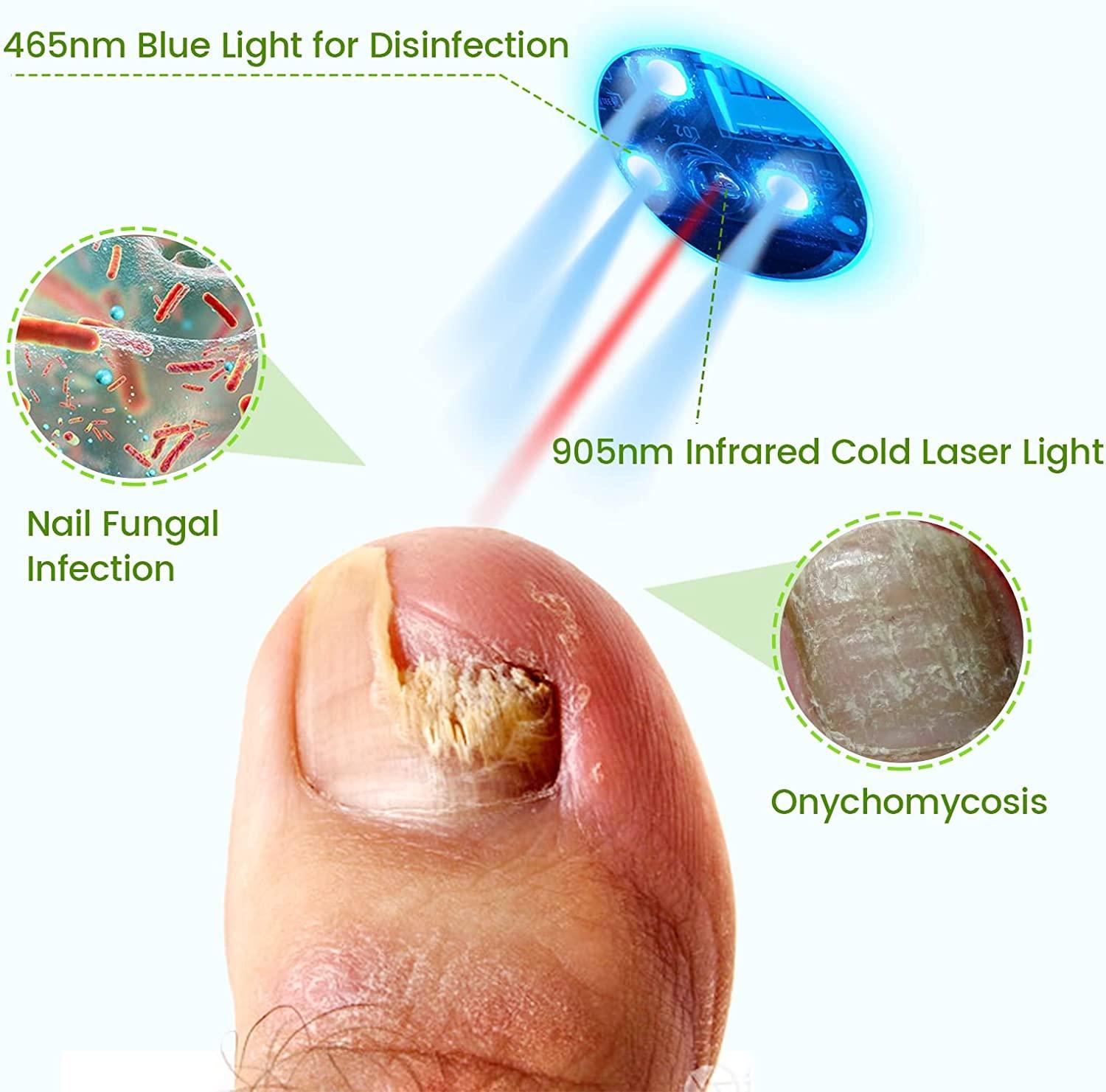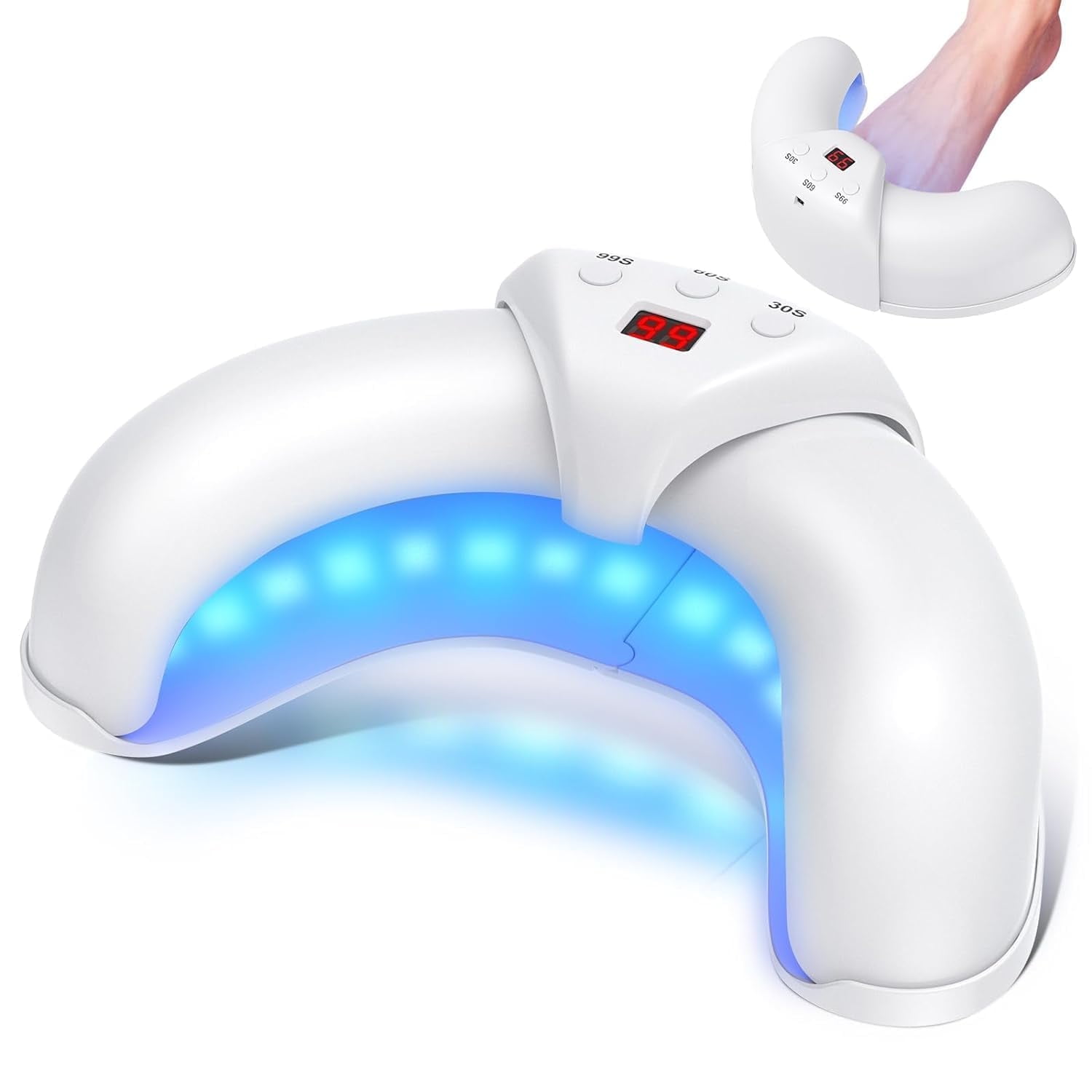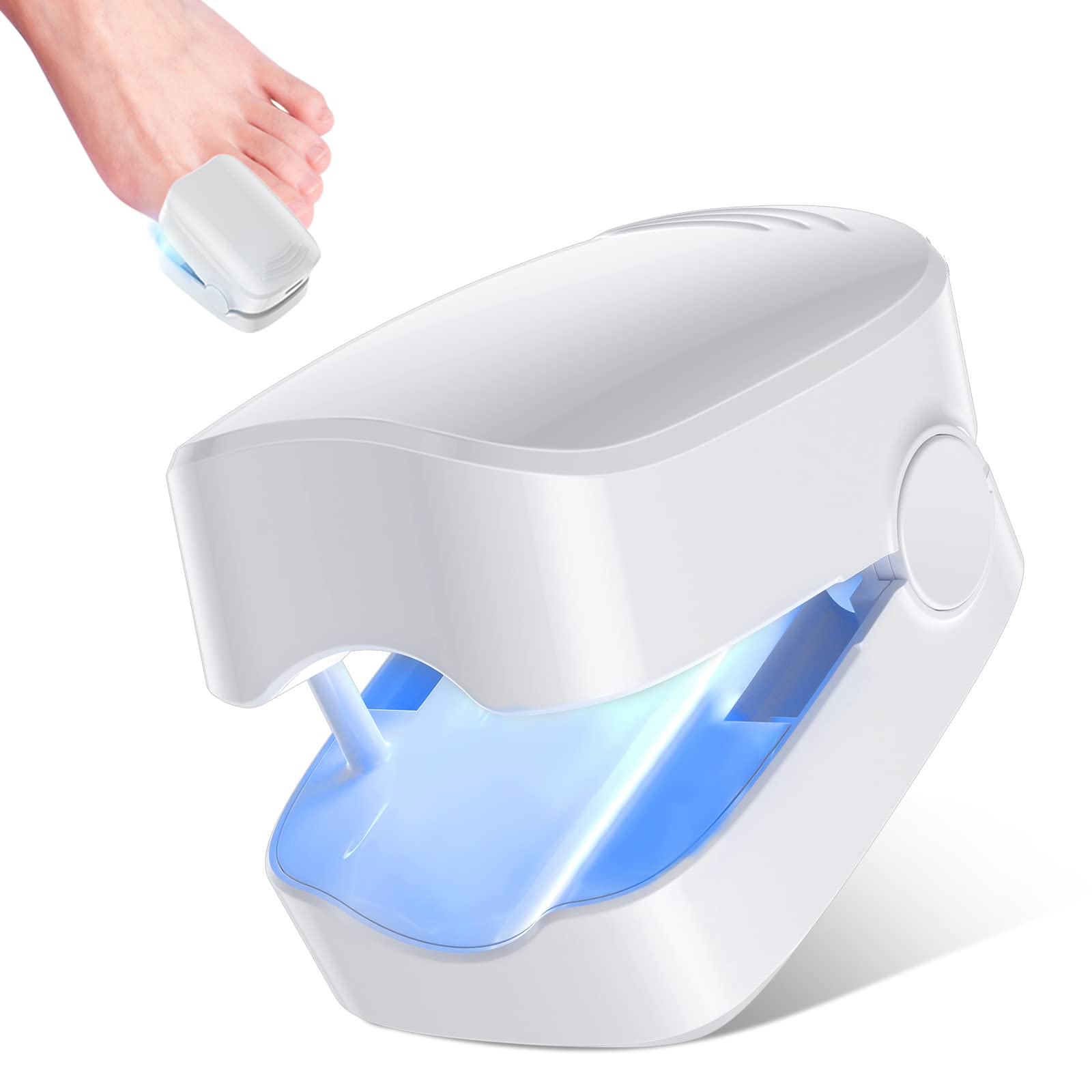Best Blue Light For Nail Fungus

Onychomycosis, commonly known as nail fungus, affects millions worldwide, causing discoloration, thickening, and even crumbling of nails. While traditional treatments like topical and oral medications exist, their efficacy can be limited, and oral medications often carry potential side effects. Now, a growing body of research is exploring the potential of blue light therapy as a safer and more effective alternative for combating this persistent infection.
Blue light therapy, utilizing specific wavelengths of light, has emerged as a promising treatment option for nail fungus. This article delves into the current understanding of blue light therapy's effectiveness, its advantages, and the ongoing research shaping its future role in treating onychomycosis.
Understanding Blue Light Therapy for Nail Fungus
Blue light therapy involves exposing the affected nail to specific wavelengths of blue light, typically ranging from 405 to 470 nanometers. This light penetrates the nail and targets the fungi residing beneath, without damaging surrounding tissues.
The mechanism of action is believed to involve the absorption of blue light by fungal cells, leading to the production of reactive oxygen species (ROS). These ROS damage the fungal cell structure and inhibit their growth and reproduction, effectively eradicating the infection.
Efficacy and Research Findings
Several studies have investigated the efficacy of blue light therapy for nail fungus. While research is ongoing, early results have been encouraging.
A 2019 study published in the Journal of the American Academy of Dermatology demonstrated that blue light therapy significantly reduced the severity of onychomycosis in a group of patients after several treatment sessions. The study noted that patients experienced minimal side effects, suggesting a favorable safety profile.
Another research, presented at the 2022 American Society for Microbiology (ASM) Microbe meeting, found that blue light, when combined with other antifungal agents, showed enhanced antifungal activity against various fungal species commonly responsible for nail infections.
These findings suggest that blue light therapy can be an effective standalone treatment or an adjunctive therapy to boost the effects of traditional antifungal medications. However, researchers emphasize the need for larger, randomized controlled trials to confirm these initial findings and optimize treatment protocols.
Advantages of Blue Light Therapy
Blue light therapy offers several potential advantages over traditional treatments for nail fungus. One key advantage is its non-invasive nature. Unlike oral medications that can cause systemic side effects, blue light therapy is a localized treatment with minimal risk of adverse reactions.
Moreover, blue light therapy avoids the potential liver toxicity associated with some oral antifungal medications, making it a suitable option for individuals with pre-existing liver conditions. Topical treatments often struggle to penetrate the nail plate effectively, limiting their efficacy.
Blue light, however, can penetrate the nail, reaching the underlying infection site, potentially leading to better outcomes. Many patients also appreciate the convenience of blue light therapy, as it can often be administered at home with portable devices, under a physician's guidance.
The Role of FDA Approval and Devices
Currently, many blue light devices marketed for nail fungus are available over-the-counter. However, not all devices are created equal. It's important to choose devices that have undergone rigorous testing and are cleared or approved by the Food and Drug Administration (FDA) for treating onychomycosis.
FDA clearance signifies that the device has been reviewed and determined to be substantially equivalent to a legally marketed predicate device. While clearance does not guarantee efficacy, it does provide some assurance of safety and performance.
Patients should consult with their healthcare providers to determine the most appropriate device and treatment protocol. Dermatologists can assess the severity of the infection and recommend a tailored treatment plan.
The Future of Blue Light Therapy in Nail Fungus Treatment
The future of blue light therapy in treating nail fungus looks promising. Ongoing research focuses on optimizing treatment parameters, such as light intensity, wavelength, and duration of exposure.
Researchers are also exploring the potential of combining blue light therapy with other antifungal agents to enhance treatment efficacy and reduce the risk of recurrence. Advancements in device technology are also leading to the development of more powerful and user-friendly blue light devices.
These innovations could make blue light therapy an even more accessible and effective treatment option for nail fungus sufferers.
Conclusion
Blue light therapy represents a promising and potentially safer alternative for treating nail fungus. With its non-invasive nature and minimal side effects, it offers a viable option for individuals seeking effective relief from this common condition.
While more research is needed to fully elucidate its long-term efficacy and optimize treatment protocols, the current evidence suggests that blue light therapy could play an increasingly important role in the management of onychomycosis. Always consult with a healthcare professional for diagnosis and treatment recommendations.


















